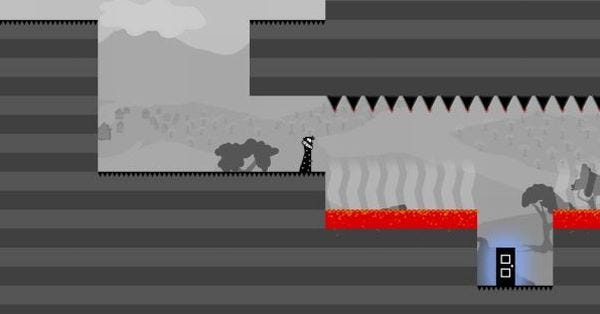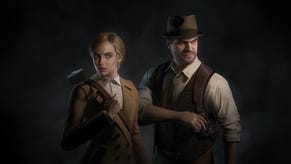Platformdungseffekt: The Fourth Wall
"Ohhhh. That's really clever," were the words uttered by my mouth as I realised The Fourth Wall's conceit. And then I realised I was going to have to try to explain it with words.
It's a 2D sometimes-side-scrolling platformer from DigiPen student group Pig Trigger, in which you can control the character and the scrolling of the screen. So, run left or right and the screen scrolls with you. However, hold down Ctrl and it becomes static, and running from one edge has you appear on the other side. So you might drop down a hole and appear from the corresponding point on the top edge, or run from the left and appear on the right - it's a notion familiar to anyone who's played enough 80s/90s platform games. But here you're in control of where the screen stops and starts, and it's manipulating this which allows you to progress.
Which is such a brilliant idea. So, for instance, there's a fiery deathtrap in front of you, and you want to reach a platform on the other side, too high to jump to. So, jump upward, until the fire is off the bottom of the screen, hit Ctrl, and then drop down the bottom. You fall through the top of the screen, and as you fall steer to the platform. Reached.
A typical puzzle may look like this:
What can you do here? You can retreat back to the left, but that's where we came from, and why do we game if not to progress? It's that door we're after, but clearly it's unreachable - this isn't Dustforce. It's way more simple than it looks.
Jump up, and that pit's gone. But the top of the screen is solid so there's nowhere to fall. So run along the now-safe bottom of the screen unto the gap in the heatwaves, and let go of Ctrl.
It rapidly gets far more complicated, as you're having to hold the screen mid-fall to allow yourself to climb upward (yup, it's that much of a brain-hurt), or jumping out of the left of the screen, turning, and falling back in the same side again in a different area. Soon you won't be troubled for long by a moment like this (oh, the solution is so elegant):
And the music, which you also can't hear, is utterly sublime.
Oh, look, you just have to play it to understand. It's free, and it's utterly brilliant.













